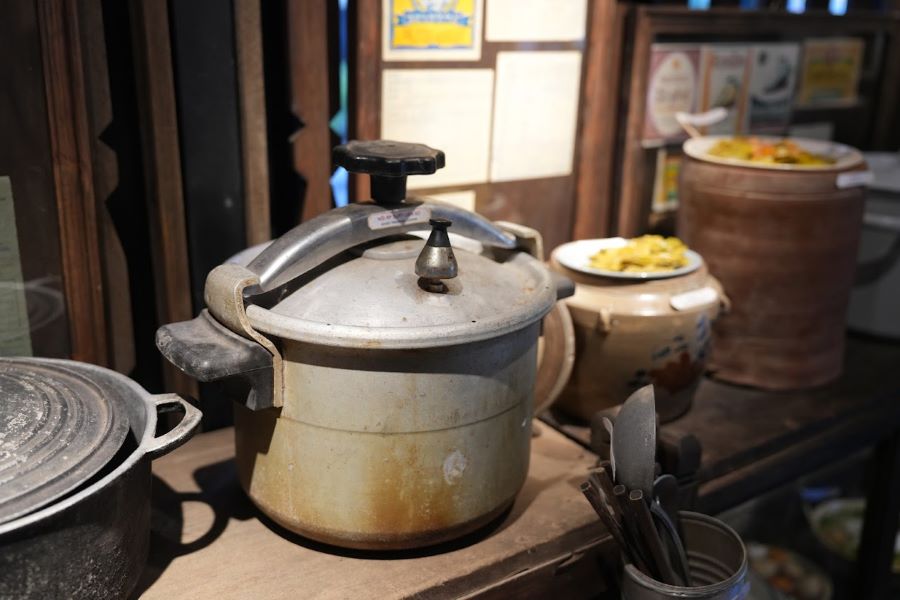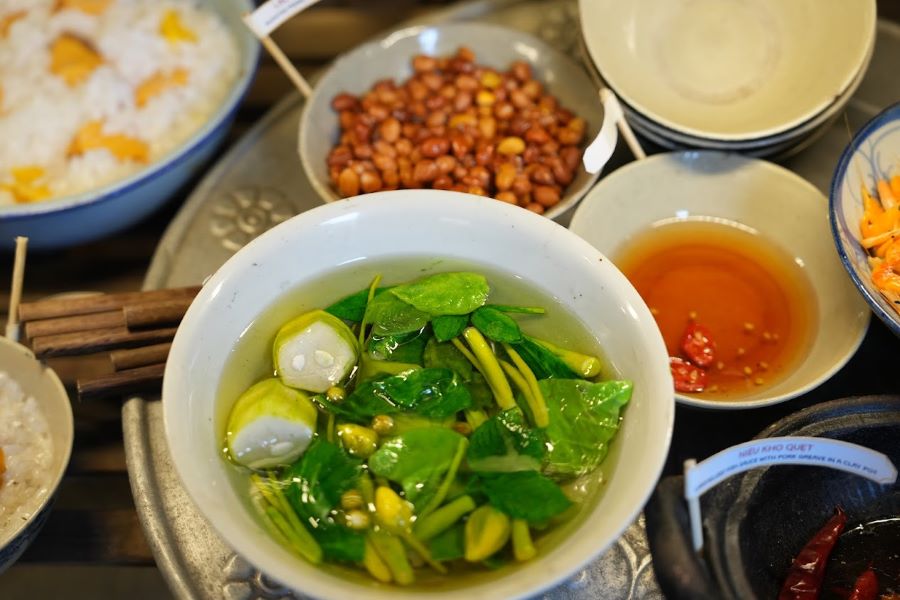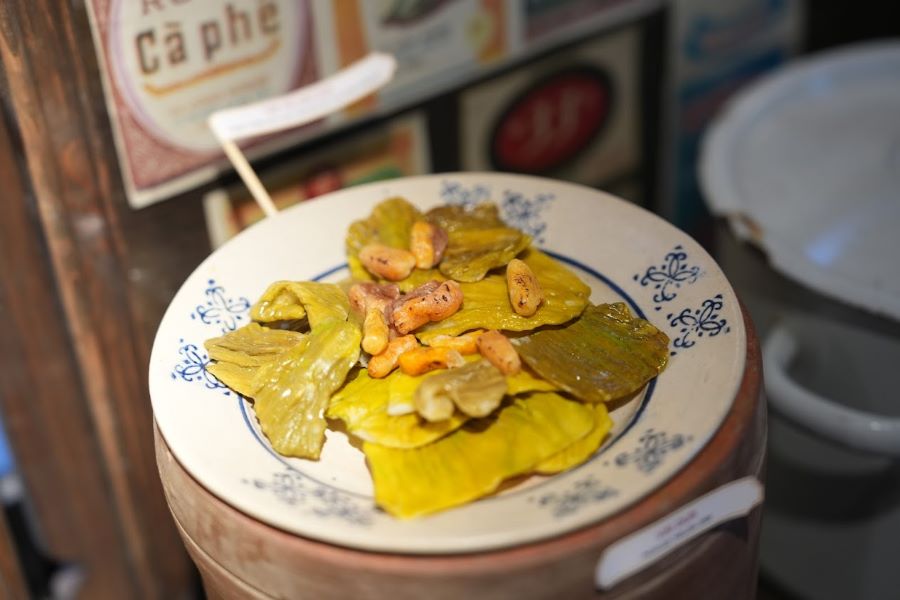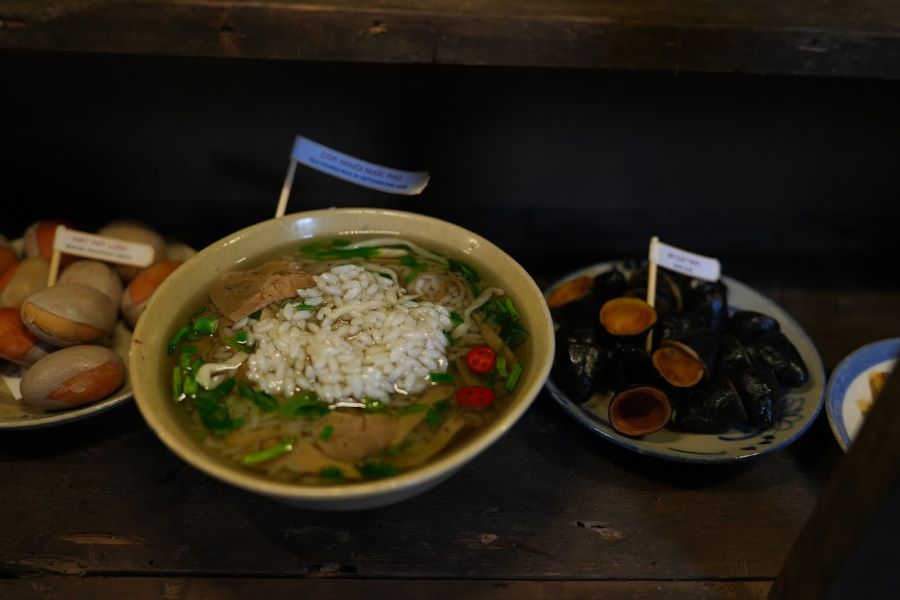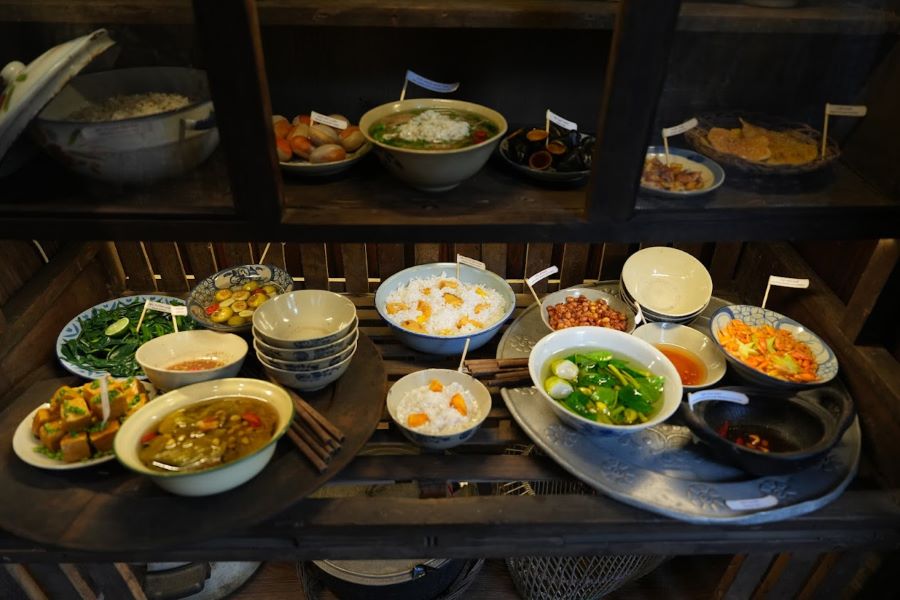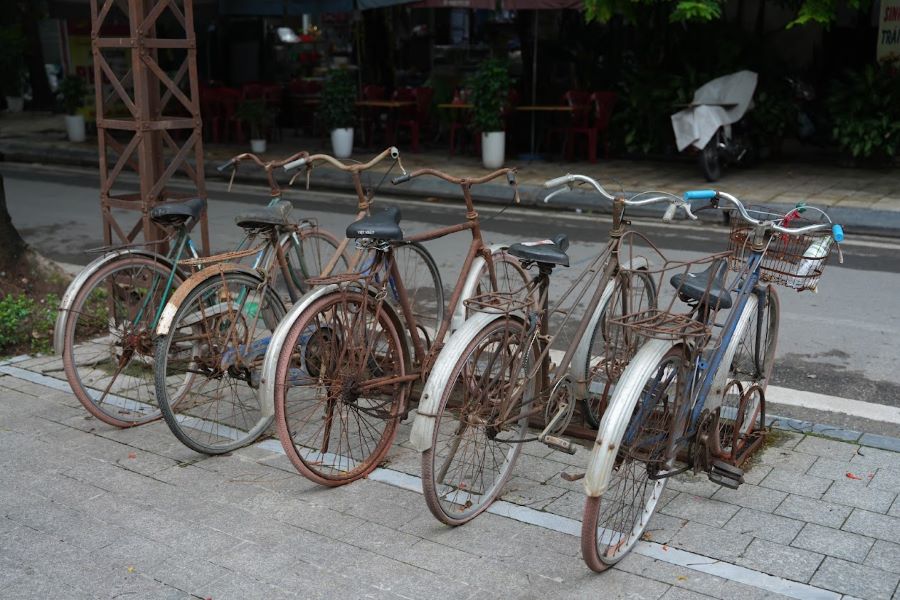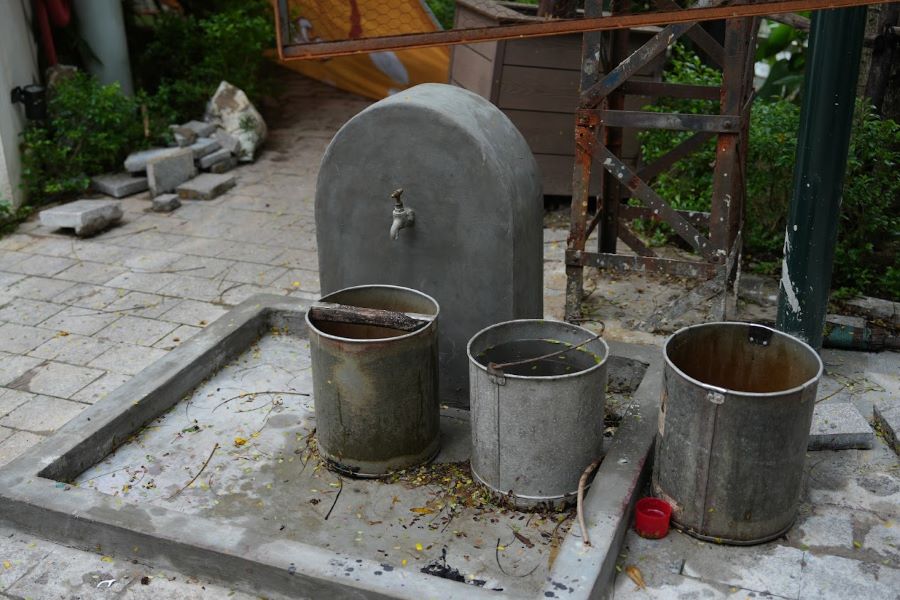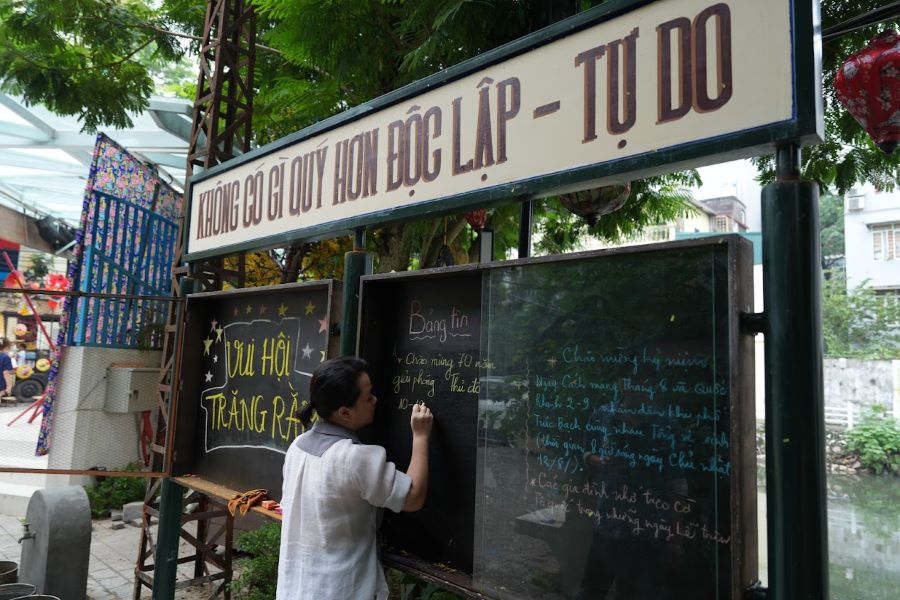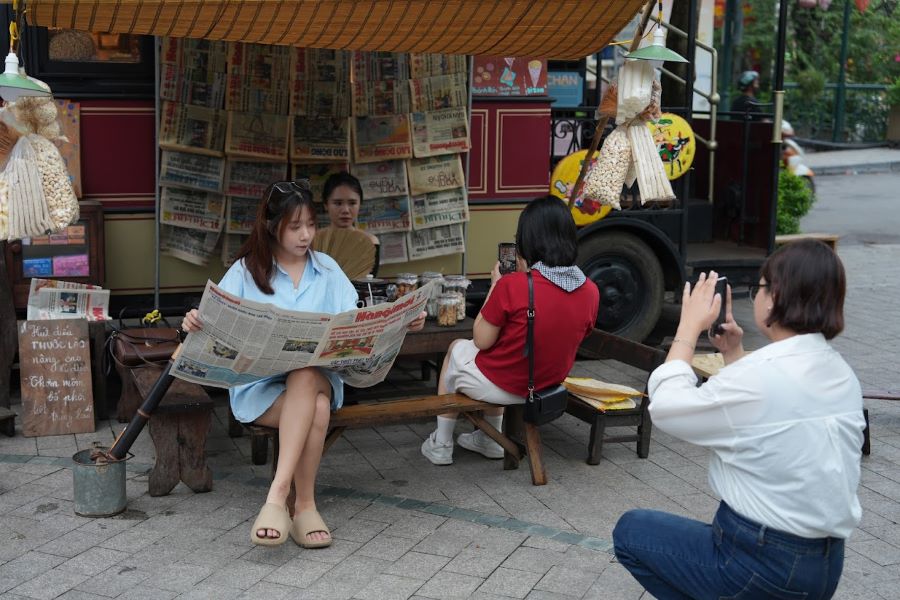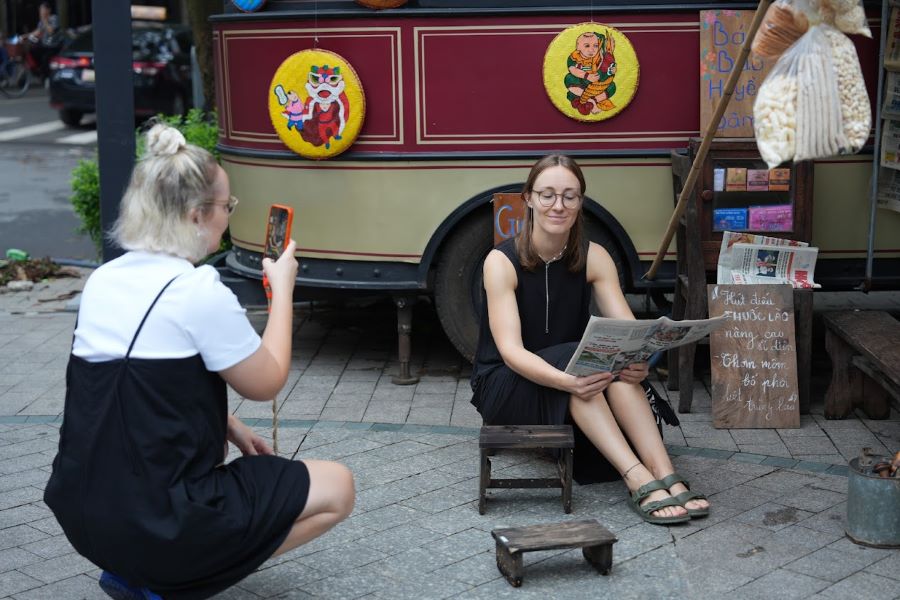Hanoi's tourist attraction brings back era of subsidies
The exhibition in central Hanoi attracts travelers interested in learning about the city's historical features as well as young people.
The exhibition called Tramway No. 6 - The Carriage of the Subsidy Era: Kitchen - Cupboard - Tray is now on display at Hanoi's night food street by Truc Bach Lake in Ba Dinh District, Hanoi.
Initiative to enrich Hanoi’s tourism offerings
| The nostalgia tram takes visitors back in time. Photos: Huy Pham/The Hanoi Times |
The event aims to bring visitors back to old Hanoi, offering a glimpse into the capital's traditional culture and cuisine from the subsidy period (1976-1986), according to Nguyen Dan Huy, Chairman of the Truc Bach Ward People's Committee.
"Tramway No. 6 - The Carriage of the Subsidy Era: Kitchen - Cupboard - Tray will offer a deeper understanding of the lives of Hanoi's people during this challenging yet meaningful period," he said.
Going back in time, Hanoians who were born and raised during the subsidy era probably have vivid memories of it. It was a time of hardship in Vietnam's history because of inadequate socio-economic management. Government control extended to every facet of life, and the sluggish, inefficient production system, coupled with restrictions on creative and spiritual pursuits, made daily life a challenge.
| The space has become a favorite tourist attraction for locals and foreign visitors to Hanoi. |
The exhibition evokes memories of the difficult times when food, goods, and services were obtained through vouchers or food stamps. It showcases some of the cuisines, household appliances, and design styles that existed then and still exist today.
This cultural space is a new attraction in Ba Dinh District, part of the Leng Keng Heritage Project, which aims to enrich Hanoi's cultural values.
Train connects the past to the present
From 1901 to 1991, Hanoi had a tram network of five lines connecting key destinations such as Hoan Kiem Lake, Mo Market, and Hue Street. The distinctive clanking of the trams is deeply embedded in the memories of Hanoi's residents, evoking a sense of nostalgia for a more peaceful, bygone era in the capital.
Dieu Huong, coordinator of the Leng Keng Heritage Project, explained that the project aims to faithfully recreate the image of old Hanoi. "This tea shop replicates the traditional tea shops of old Hanoi, serving only hot tea, unlike the iced tea commonly served today," she said.
"In addition, books and newspapers, although scarce during the subsidy period, were often found in tea shops, which served as important places for local people to access information and discuss current affairs," she added.
| A foreign traveler is exploring the exhibition space. |
In addition to reliving past experiences, visitors gain a deeper understanding of Hanoi's historical and cultural values. This serves as a means of fostering intergenerational understanding by allowing younger Vietnamese to recognize and honor the struggles of their ancestors and by providing a platform for older generations to communicate and pass on priceless memories and experiences to their offspring.
"I think the exhibition is particularly relevant for Hanoians. For those of us born after the 2000s, it provides a valuable insight into Hanoi's culture from about 40 years ago. Recently, the younger generation has shown increasing interest in Vietnam's historical culture and heritage, so the event has attracted many young people," Nguyet Minh, a tourist from Cau Giay District, told The Hanoi Times.
Tram No. 6 has two floors. The first recreates a Hanoi household kitchen from the subsidy era, complete with old kitchen utensils such as wooden cupboards, thermos flasks and oil stoves.
| Once considered a 'treasure' for Hanoi housewives, these old kitchen utensils could only be found in wealthy households. |
All the items on display here are real artefacts, either compiled by the organizers or donated by local residents, each telling their own stories and memories of Hanoi families from the past.
The exhibition also features typical dishes from the subsidy period, such as "com don san" or steamed red rice with cassava, "long xao dua" or stir-fried pork intestines with pickled mustard greens, "dau rim mam" or fried tofu in fish sauce, "hat mit luoc" or boiled jackfruit nuts, and others.
The outdoor area mimics an old-style tea shop popular in Vietnam during the 1975-86 post-war period, with old newspapers and low plastic stools.
Popular snacks from the subsidy era, such as peanut candy and Che Lam cake, are also on sale.
Meanwhile, the second floor of the tram is designed as a Vietnamese restaurant where visitors can sample dishes from the subsidy era.
The whole area evokes a sense of nostalgia for the old days, which resonates with locals and travellers alike. Tramway No. 6 - the Carriage of the Subsidy Era: Kitchen - Cupboard - Tray is open to the public daily from 15:00 to 22:00.
| Young tourists love to take photos on this unique tram in Hanoi. |
| A pavement tea shop is a popular meeting place for friends during the subsidy period. |
| A typical Hanoi vegetable soup from the subsidy era, still popular today: Malabar spinach soup with Vietnamese luffa. |
| The dish of stir-fried pork greaves with pickled mustard greens. |
One of the old customs of the Hanoians was to save food: they ate cold rice along with the traditional Vietnamese beef noodle soup.
|
Bicycles used to be the most popular means of transportation in Hanoi during the subsidy period. |
| Public water tap in Hanoi in the 1980s |
| Notice board used to communicate important information to the public in the 1980s. |
| It's an ideal tourist attraction for young local at the weekend... |
| ... and also a funky place of interest for foreign tourists. |





